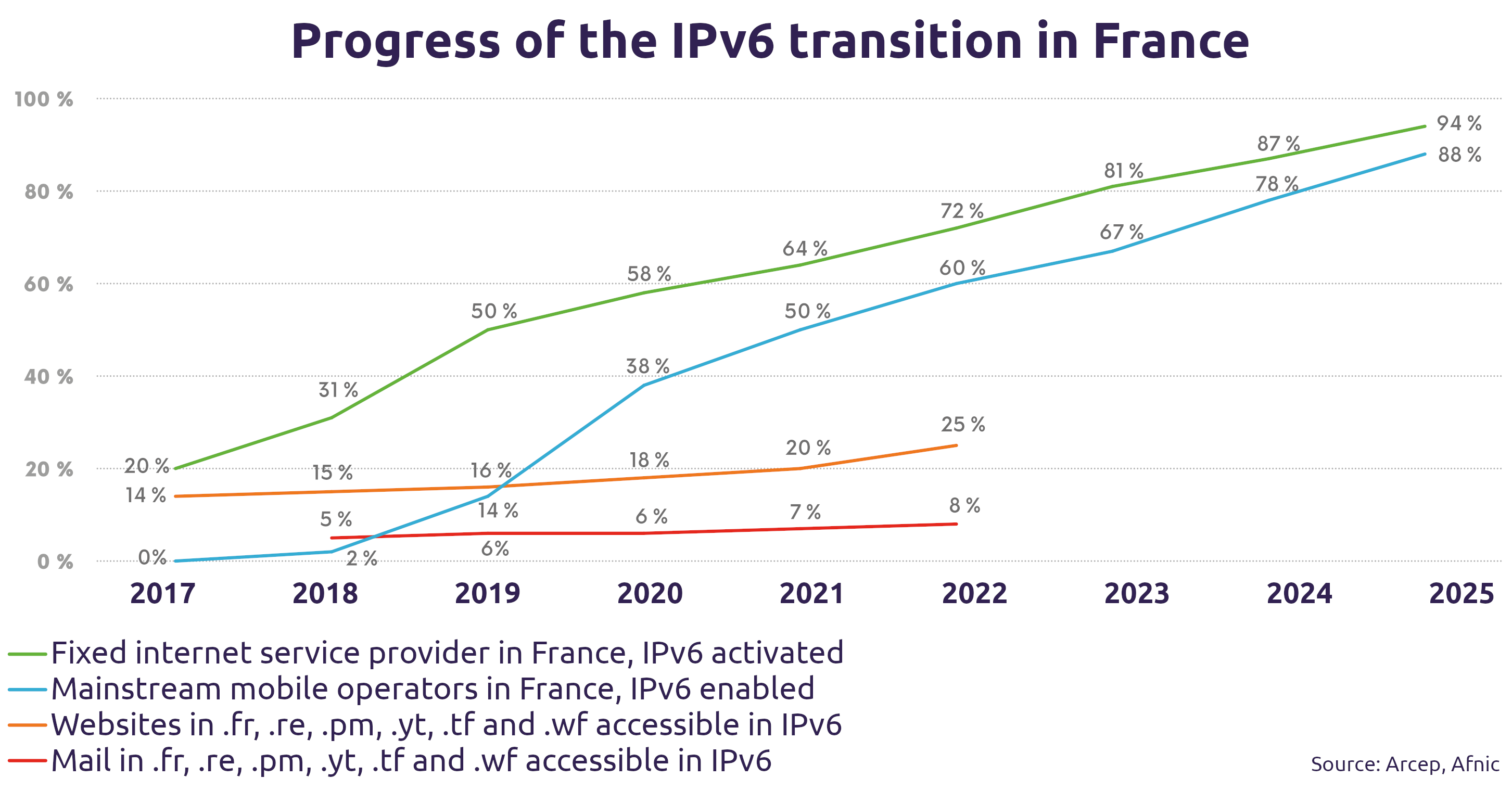Every year, Arcep updates its IPv6 Barometer which examines how all of the players’ along in the internet chain are faring in the transition to IPv6. It provides a snapshot of the current status of deployments, along with forecasts for the main operators for both fixed and mobile networks.
The shortage of IPv4 addresses announced in late 2019 requires all internet players to make the transition to IPv6. Continuing to maintain the IPv4 protocol poses a number of threats to the smooth running of the internet, in terms of the ability to access a service or identify IP addresses, for instance. The transition to IPv6 is therefore the only future-proof solution to ensure that the internet remains a place of innovation and competitiveness.
France rank second worldwide in the transition to IPv6
France has improved its place in the global IPv6 adoption rankings significantly, going to from 8th spot in February 2022 to second spot today[1]. To provide a clearer picture of the status of IPv6 take-up around the globe, Arcep has posted a new interactive map that delivers a snapshot of IPv6 adoption levels, country by country.
Very clear progress in operators’ overall IPv6 adoption rates, but still massive disparities between fixed and mobile networks, and between market players
The 2022 Barometer reveals the significant overall progress that operators in France have made in the transition to IPv6, with an adoption rate that exceeds 62% (+15 points YoY).
According to the Barometer’s forecasts, by mid-2025, 94% of consumer subscribers on fixed networks and 88% of consumer subscribers on mobile networks should be IPv6-ready by default.
The Barometer nevertheless reveals sizeable disparities between fixed and mobile operators:
- On public fixed networks, while Free has virtually completed its transition, SFR has not yet begun its transition on cable networks. Overall, on public fibre networks, the transition to IPv6 is expected to be almost complete by mid-2025: virtually every customer (over 99%) will be IPv6-ready by default;
- On public mobile networks, Arcep has ascertained sizeable disparities between the main French telecoms operators, and invites Free mobile to make its lines IPv6-ready by default.

Internet players who are lagging behind are urged to accelerate their transition to IPv6
Web hosting companies continue to lag far behind. Even if several hosting companies do include IPv6 in their solutions, the percentage of IPv6-ready websites remains low (25% of the 2.3 million websites with.fr, .re, .pm, .yt, .tf and .wf domain names with valid HTTPS hosting). The percentage of IPv6-ready mail servers is also still very low, with only around 8.3% being IPv6-ready. If the gap on this link of the access chain is not closed in the coming years, it could delay the IPv4 switch-off and prolong the inherent complications of having to support IPv4/IPv6 cohabitation on the networks.
Arcep will continue its commitment to actions in support of the transition to IPv6 in 2023. It will maintain its dialogue with stakeholders, notably thanks to the “IPv6 task force” co-chaired with Internet Society, and will monitor adoption of the protocol in partnership with Afnic.
Associated documents:
- 2022 Barometer of the transition to IPv6 in France
- Interactive IPv6 adoption map
- Handbook “Businesses: how to deploy IPv6” (updated in July 2022)
- Handbook “Businesses: why switch to IPv6?” (published in December 2020)
[1] IPv6 adoption rate rankings for the 100 countries with the most internet users. See the Arcep website for details on the methodology used.

